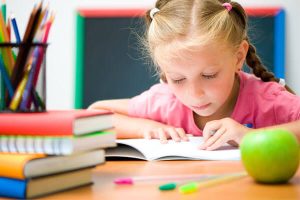The Montessori Advantage
The Montessori method of teaching is renowned as one of the most innovative and intelligent teaching methods available for young children. It was created by Dr. Maria Montessori who was a respected Italian physician, educator and Philosopher in 1907.
Montessori’s approach to the education of a child is unique in that it is based on the observation of the child and following his or her abilities and interests. By observing children closely, you are able to identify when a child is most willing and ready to learn a specific skill. The method is based on the freedom of the child to explore and learn, mostly, through self-direction.
The Montessori philosophy is based on the following principles:
Principle 1
The experience of learning is positive and cultivates a child’s innate sense of curiosity and motivation to become life long learners.
Principle 2
One of the fundamentals of the approach is that the child has the greatest capacity to learn from birth to age six.
Principle 3
All children need to be treated with respect.
Principle 4
There should be freedom of movement in a classroom to assist with the process of learning.
Principle 5
There should be a structured environment where everything is child sized.
Principle 6
Children develop at their own pace and potential.

“One test of the correctness of the educational procedure is the happiness of the child .” – Maria Montessori
The Montessori Approach
Montessori cultivates independence
- You let the child do what an adult would do for a child in a prepared environment.
- You will find the child following their own motivation for learning, rather than the stepwise directions of the teacher.
Each child is valued as a unique individual
- The classroom and curriculum is designed around their specific needs and abilities that allow the child to explore and learn at their own pace and on their own terms.
- Montessori education recognizes that children learn in different ways, and accommodates all learning styles.
The curriculum is individualized to each child's needs
- Children are allowed to explore the environment at their own pace.
- Learning occurs at a comfortable pace for each student, rather than inflicting the same rate on every student in a classroom.
Mixed-aged grouping
- The mixed age group environment creates an atmosphere where children learn to help and be helped by other children, because they interact consistently with children whose age and abilities are varied.
- Young children learn higher level cognitive and social skills not only through mental development, but also by observing others as models.
- Older children learn to be patient and tolerant, and serve as role models and teachers for the younger children. When an older child teaches a younger one, it reinforces previously learned concepts.
Hands-on learning
- Each area in the Montessori classroom have concrete materials where children can explore using all senses.
- Benefits children with different means of learning.
The Five areas of a Montessori Classroom

Practical life activities provide the groundwork for physical, mental, and social development, and are the foundation of a Montessori environment. The main purpose for this area is for the child to develop independence, coordination and concentration. The real life experiences that come from the practical life area such as pouring, transferring and dressing help children with their daily life routines.

The Language area of the Montessori classroom encourages development of early-literacy. Language skills are acquired in steps. Speaking, learning the phonetic sounds of letters, word building and recognition, writing and reading.

The sensorial materials in the classroom allow the child to refine their sense of touch, taste, smell, sight and sound. The sensorial area builds the child’s concentration for a wider awakening of the senses and perception for distinguishing different qualities and patterns. Many of the exercises in this area are also indirect preparations for later mathematics and language work.

The Math area of the Montessori classroom encompasses the use of concrete materials for the recognition of numbers and the recognition of quantity as well. Mathematics activities are divided into six categories : counting and the decimal system, memory work, concrete abstraction, arithmetic tables and geometry. Children are introduced to more complex mathematical procedures and concepts, as they are individually ready.

The Culture area of the classroom gives children the ability to learn about a variety of subjects in a hands on way that gets kids excited about learning. It also educates them about their culture and the culture of others and respect. The classroom encompasses a variety of subjects which include: Geography, Zoology, Botany, Science, Art & Music and Languages.
| Practical Life | Sensorial | Mathematics | Language | Culture |
|---|---|---|---|---|
|
Care of Self – Dressing frames |
Visual – Cylinder blocks |
Numbers to 10 – Number rods |
Oral – Identifying sounds |
Geography – Sandpaper globe |
|
Care – Washing tables |
Tactile (Touch) – Touch boards |
Decimal System – Golden beads |
Writing – Sandpaper letters |
Zoology – Living & non-living |
|
Grace – Greeting people |
Olfactory (Smell) – Smelling bottles |
The 4 Operations – Addition |
Reading – Pink scheme (3 letter phonetic words) |
Science – Magnetism |
|
Control of Movement – Rolling mats |
Gustatory (Taste) – Taste bottles |
Memorization – Small number rods |
Part of Speech – Noun and verbs |
Botany – Parts of a plant |
|
Focus – Lacing |
Auditory (Sound) – Sound cylinder |
Fractions | Sentence Analysis (Structure) |
History – Family tree |
| Personal Independence | Stereognostic (Touch with Movement) | Time & Money | Composition | French |
